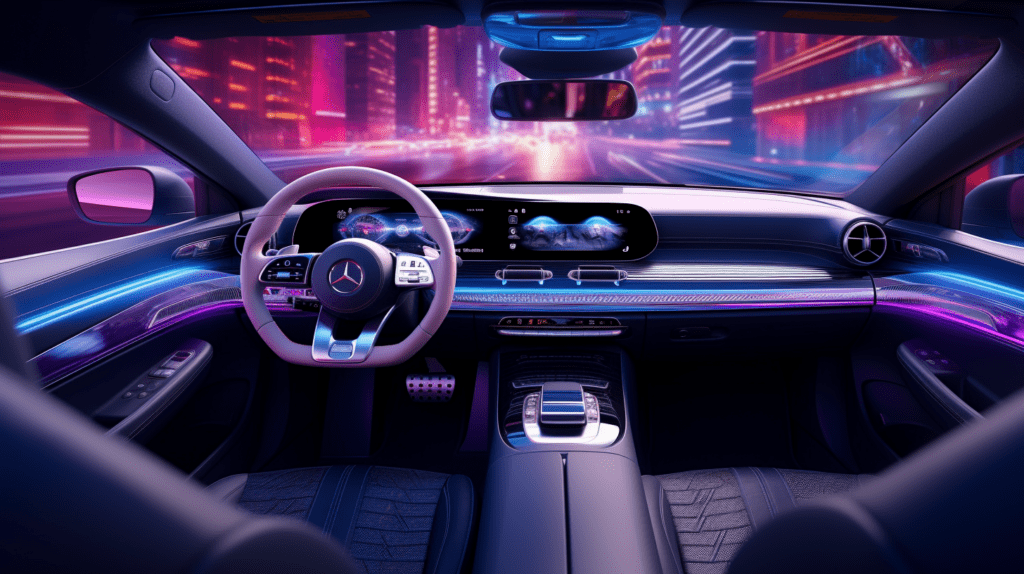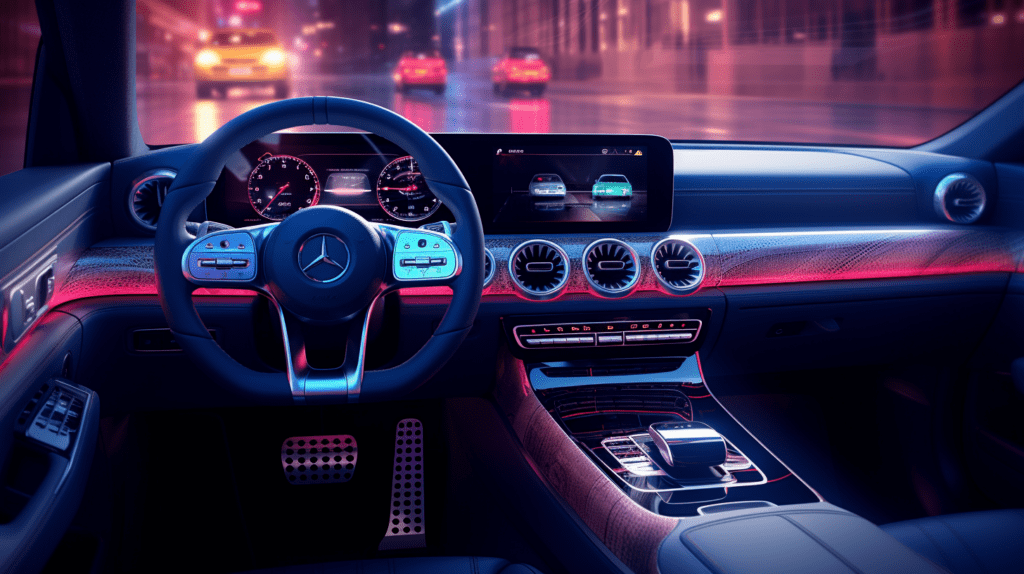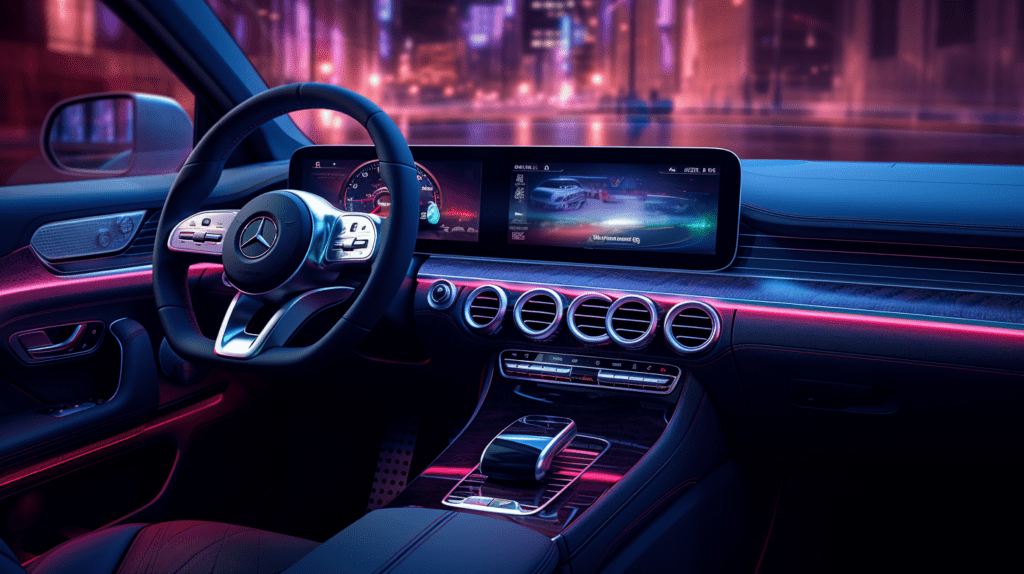Mercedes Benz Augmented Reality Windshield

Are you tired of constantly looking down at your phone or navigation system while driving? Well, Mercedes Benz has a solution for you. Introducing the Mercedes Benz Augmented Reality Windshield, a revolutionary technology that brings the digital world right in front of your eyes. With icons flashing on your car windshield, you can access real-time information about nearby locations without taking your eyes off the road. Simply point your hand at the icons to open them and stay focused on driving.
Key Takeaways
- Mercedes showcases a prototype of an augmented reality, gesture-controlled networking system at CES
- The technology allows icons to flash on the car windshield, providing real-time information about nearby locations
- Gesture control is intuitive and natural, allowing users to interact with the technology by pointing
- Automakers are embracing gesture control as a way to simplify interfaces and keep drivers focused on the road
Mercedes Benz Augmented Reality Windshield Features

The Mercedes Benz augmented reality windshield features a holographic display that provides crucial information to the driver. With its AR HUD capabilities, the windshield enhances safety by keeping the driver’s eyes on the road while displaying important information like speed, distance, and directions. This cutting-edge technology utilizes AI-powered navigation, ensuring a reduced cognitive load for the driver. The AI-powered AR navigation system reduces fatigue and stress by displaying arrows and stripes on the road, eliminating the need for map reading. But what sets this augmented reality windshield apart is its realism in AR navigation. The system occludes AR markers with elements from the real world, creating an incredible sense of depth and realism. It can even overlay directional arrows on cars, pedestrians, trees, and other objects, making navigation intuitive and visually immersive. The potential applications for this technology are vast, ranging from passenger entertainment screens for Pokémon-style games to metaverse applications. As for future developments, car manufacturers are continuously working on advancements in AR technology for cars, aiming to further enhance the driving experience and safety on the road.
Integration of Digital Technology in Cars
How can digital technology be seamlessly integrated into cars to enhance the driving experience and ensure safety? As technology continues to advance, car manufacturers are finding ways to integrate digital features into vehicles to prioritize user experience and connectivity while minimizing driver distraction. One key advancement is the integration of voice control systems, allowing drivers to interact with the car’s features hands-free, reducing the need to divert attention from the road. Additionally, connectivity features enable seamless integration with smartphones and other devices, providing access to navigation, music streaming, and other applications. Autonomous vehicles are also being developed, utilizing digital technology to enhance safety and convenience by taking over certain driving tasks. To give you a clearer picture, here’s a table detailing the integration of digital technology in cars:
Digital Technology Integration in Cars
| Digital Technology Integration | Benefits |
|---|---|
| Voice control systems | Minimize driver distraction and allow hands-free interaction with car features |
| Connectivity features | Seamless integration with smartphones and other devices for enhanced user experience |
| Autonomous vehicles | Enhanced safety and convenience by taking over certain driving tasks |
Safety and Convenience in Automotive Technology
To prioritize safety and convenience, automakers are integrating various digital technologies into cars. One of the key considerations in this integration is minimizing driver distraction. Voice-powered technology has emerged as a solution to keep drivers focused on the road. By allowing drivers to control various functions using voice commands, they can keep their hands on the wheel and their eyes on the road. Additionally, automakers are developing advanced systems to monitor driver alertness. These systems can detect signs of drowsiness or distraction and provide alerts to the driver, helping to prevent accidents. Automotive safety features are also being enhanced to strike a balance between convenience and safety. For example, advanced driver assistance systems such as lane departure warning and automatic emergency braking are becoming standard in many vehicles. These features provide an extra layer of protection and help to mitigate the risk of accidents. As digital technology continues to advance, automakers are committed to integrating it in a way that enhances safety and convenience for drivers.

Future Advancements in Automotive Technology
As automotive technology continues to advance, you can expect to see future advancements that further enhance safety, convenience, and the overall driving experience. One area of advancement is in AI-powered AR navigation, which reduces the driver’s cognitive load by displaying real-time information and reducing the need to read maps or follow complex directions. This technology uses augmented reality to overlay navigation icons on the windshield, providing a clear and intuitive visual guide. Advancements in AR HUD technology also contribute to the driving experience by bringing realism and depth to AR navigation. The Phiars system, for example, occludes AR markers with elements from the real world, creating a sense of depth and making the navigation experience more immersive. In terms of potential applications and future developments, there is a growing interest in integrating AR technology into passenger entertainment screens and expanding the use of AR in entry-level vehicles. The goal is to continue reducing the size and cost of AR HUD systems while enhancing their capabilities. Overall, the introduction and adoption of augmented reality in cars have opened up new possibilities for enhancing the driving experience and making it safer and more convenient.
Growth of the Automotive HUD Market
The growth of the automotive HUD market has been driven by increased customer awareness about vehicle and road safety, as well as the demand for an improved driver experience. Here are three key factors contributing to this growth:
- Improved driver experience: Automotive HUD technology enhances the driver’s experience by providing crucial information directly in their field of vision. With real-time data displayed on the windshield, drivers can easily access information like speed, distance, and directions without taking their eyes off the road.
- Luxury car segment: The automotive HUD market has experienced significant growth in the luxury and high-end car segments. Luxury car manufacturers such as Mercedes, BMW, and Genesis have expanded their HUD capabilities to offer a more immersive and futuristic driving experience.
- Emerging markets: Emerging markets have played a significant role in driving the growth of the automotive HUD market. As road safety awareness increases globally, more drivers are seeking affordable HUD technology to enhance their driving experience and improve safety on the roads.
With the increasing demand for improved driver experience, the automotive HUD market is projected to reach $3.9 billion USD by 2027. As technology continues to advance and become more affordable, we can expect to see even more widespread adoption of HUD technology in the automotive industry.
Frequently Asked Questions
How Does the Augmented Reality Windshield in Mercedes Benz Vehicles Work?
The augmented reality windshield in Mercedes Benz vehicles works by displaying holographic images on the windshield. It provides crucial information like speed and directions, enhancing the driving experience and keeping your eyes on the road.
What Are the Benefits of Using Gesture Control Technology With the Augmented Reality Windshield?
Using gesture control technology with an augmented reality windshield offers numerous benefits. It enhances the user experience by providing a more intuitive and natural way to interact with the technology. Additionally, it improves safety, convenience, and efficiency while driving.
Can the Augmented Reality Windshield Display Information Other Than Nearby Locations?
Yes, the augmented reality windshield can display a variety of information beyond nearby locations. It has future applications for safety features, navigation capabilities, and real-time updates, all while providing a user-friendly interface.
How Does the Integration of Digital Technology in Cars Impact the Overall Driving Experience?
The integration of digital technology in cars impacts the overall driving experience by enhancing safety features, minimizing driver distraction, improving user interface, enabling connected car technology, and facilitating the integration of autonomous driving.
What Are Some Future Advancements in Automotive Technology Related to Augmented Reality Windshields?
In the future, automotive technology will bring exciting advancements to augmented reality windshields. Safety features, interactive displays, virtual reality integration, and artificial intelligence will revolutionize the driving experience. Get ready for the future of driving!
